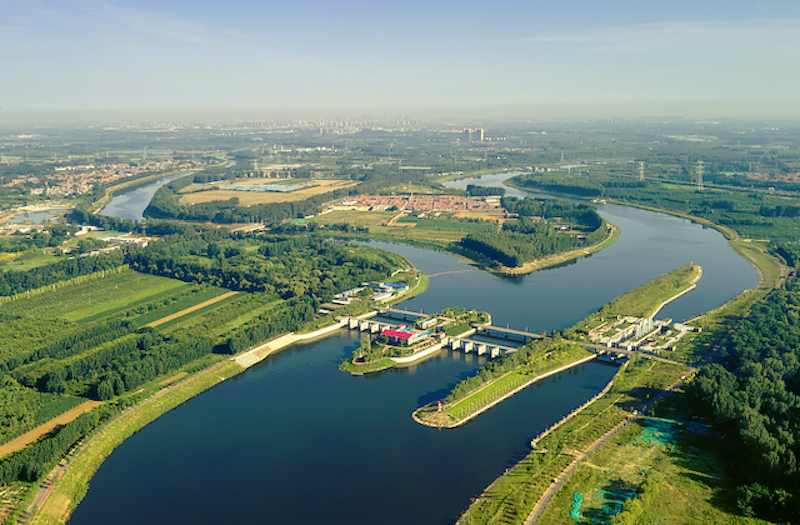Grand Canal

[Photo via VCG]
The Grand Canal, dating back to 486 BC, is a remarkable hydraulic project completed by the ancient Chinese laborers. It is the longest canal in the world and the earliest and largest one ever dug, with a remarkable history spanning over 2,500 years. In 2014, the Grand Canal was included in the World Heritage List of UNESCO.
The Grand Canal is divided into three main sections, namely the Suitang Grand Canal, the Beijing-Hangzhou Grand Canal, and the Zhedong (Eastern Zhejiang) Canal. The Beijing-Hangzhou Grand Canal starts from Yuhang (modern-day Hangzhou) in the south and extends northwards to Zhuojun (modern-day Beijing). It passes through several provinces and municipalities, including present-day Zhejiang, Jiangsu, Shandong, Hebei, Tianjin, and Beijing, connecting five major river systems including the Haihe River, the Yellow River, the Huai River, the Yangtze River, and the Qiantang River. With a total length of approximately 1,797 kilometers, the section is of high significance in terms of transportation, irrigation, and drainage. It has served as a vital waterway throughout Chinese history and played a crucial role in the economic and cultural exchanges between the northern and southern parts of China.

[Photo via tuchong.com]
Among the 35 canal cities in China, Beijing is the northern terminal of the Beijing-Hangzhou Grand Canal. Among the Grand Canal's 58 UNESCO World Heritage Sites in China, two are situated in Beijing, namely Chengqing Upper Lock Gate (Wanning Bridge) and Chengqing Middle Lock Gate (Dongbuya Bridge).
Chengqing Upper Lock Gate is located west of Wanning Bridge in Xicheng District, Beijing. It was built in the late 13th century (early years of the Yuan Dynasty) to regulate the water level of the Tonghui River, making it easier for ships to enter and exit Shichahai. Although the gate is no longer in use, Wanning Bridge to its east still serves as a transportation bridge and the entrance for the Tonghui River into Shichahai. It once played a crucial role in ensuring the supply of grain to Dadu (Beijing) during the Yuan Dynasty And therefore stands as a tangible reminder of Beijing's history of water transportation.
Chengqing Middle Lock Gate (Dongbuya Bridge), located near the northern end of today's Ping'an Street, was built during the Ming Dynasty in 1420. It served as a crucial passage for canal boats traveling to the terminal dock at Shichahai. However, with the expansion of the outer wall of the Imperial City of the Ming Dynasty, Chengqing Middle Lock Gate fell into disuse, and now exists only as a relic. During the early years of the Republic of China era, it was demolished along with the dismantling of the walls of the old Imperial City. To the south of the gate lies Dongbuya Bridge, which dates back to the Yuan Dynasty or earlier and is now in a state of ruins.
In the 1950s, the waterway was buried underground and hutongs were constructed nearby, including Dongbuyaqiao Hutong which was once the north-south part of the old waterway. Starting in 2007, several relevant municipal authorities of Beijing carried out archaeological excavations and reconstruction work. As a result, around 770 meters of the ancient path of the Yuhe River were restored, stretching from Dongbuya Bridge at Di'anmen East Street in the south to Wanning Bridge at Di'anmen Outer Street in the north. The restored path has been presented to the public anew.
(Source: Takefoto.cn)

